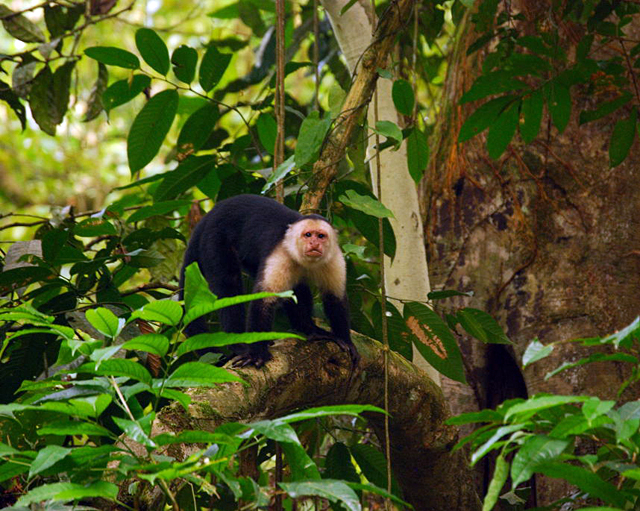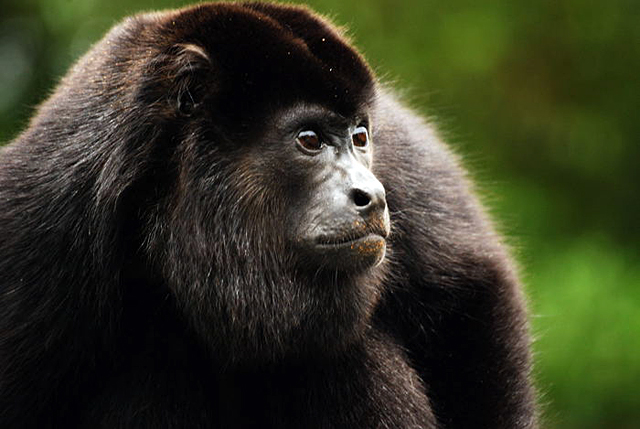
“We saw some really unusual stuff this last year,” says Glenn, an anthropologist at HSU and head of the department’s Biological Anthropology Research Laboratory. “Two groups of howler monkeys had been calling and going at each other on this suspension bridge and they started wrestling and grappling. We saw a howler monkey grab another one and throw it off the bridge. The monkey fell about 50 feet but survived.”
Glenn and her students also observed unusual inter-species interactions including spider and capuchin monkeys playing together. The observations were made during an approximately two-week period in June as part of the Costa Rica Primate Field Program coordinated by Glenn. Humboldt State students, as well as those from other universities, have an annual opportunity to travel out of the country to study primates in the field and gain invaluable hands-on experience.

This year, the program runs from May 26 to June 29 and offers students the potential to earn 12 units through the Anthropology Department. Students participating in the program attend 11 days of classes at Humboldt State where they study Costa Rican primate behavior and ecology as well as Costa Rican culture. The group then heads to La Selva Biological Field Station in Costa Rica. Once on the ground, Glenn, along with co-instructor Marissa Ramsier, guides the students through what amounts to a high-intensity anthropology field school. The group eats breakfast at sunrise before breaking into smaller clusters and heading out to explore the jungle in search of primates. After their morning observations, the groups return to the field station for lunch and a classroom lecture before returning to the jungles for a late afternoon observation session.
“I’ve always been interested in primates and an opportunity to include this trip with my studies was very exciting,” says Rebekah Dickens, an anthropology major and president of the Northwest Primate Conservation Society at Humboldt State. “The idea of being in the jungle everyday for a couple of weeks was pretty appealing to me. It was definitely different, people’s bodies reacted differently to the new environment, but after a couple of days you get more used to it. It was harder work to find monkeys than I expected, but once we found them it was amazing to observe their behavior.”
Lauren Ludtke, a senior anthropology major, was also a member of the summer 2008 cohort that studied in Costa Rica. She remembers finding spider monkeys for the first time during a jungle expedition.
“When we finally encountered a group of spider monkeys it was very exciting,” Ludtke says. “Throughout most of the program we only saw capuchins and howlers and the spider monkeys were kind of elusive. So, when we were finally able to observe their behaviors it was a pretty special moment.”
This year the program will host the most students in its history, 22, and the deadline for applications is January 30. Students from all majors are welcomed to take part in the program and there are no prerequisites. Those interested can find out more at the program’s Web site
“At first when I signed up I was kind of put off because classes for the program started right after the spring semester ended, but it was totally worth it for the experience,” says Ludtke. “It was pretty amazing to study primates in the field in this program and work with Mary Glenn—she’s awesome!”
For more information about the Humboldt State chapter of the Northwest Primate Conservation Society, email Rebekah Dickens at rss18@humbolt.edu.